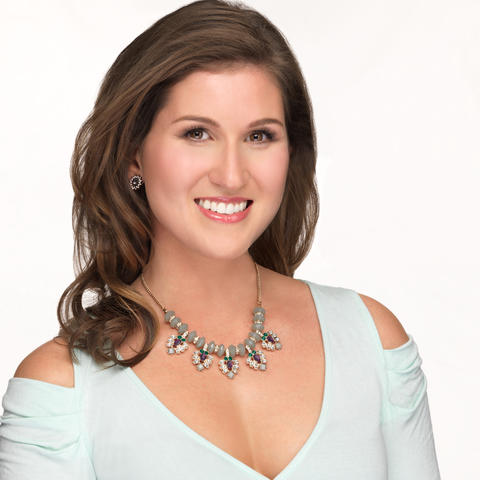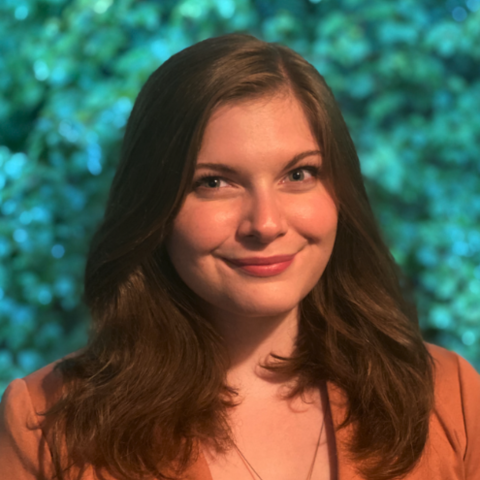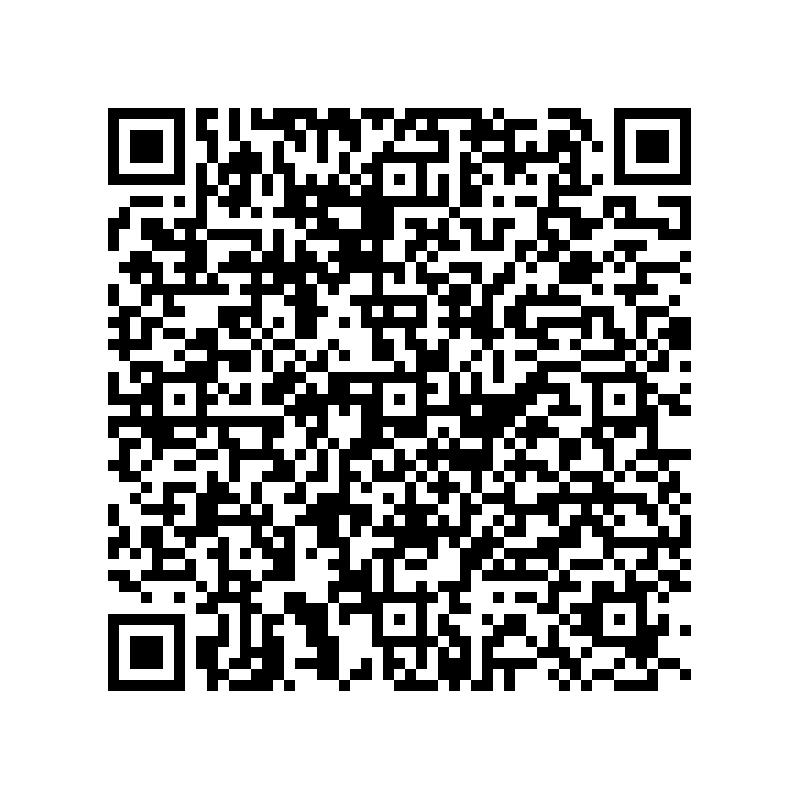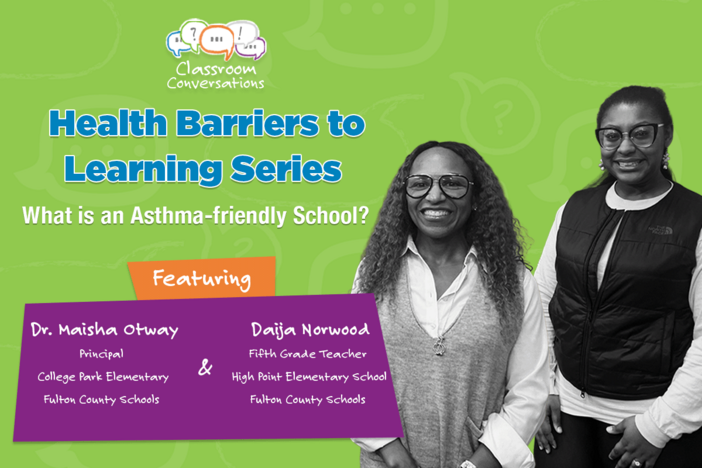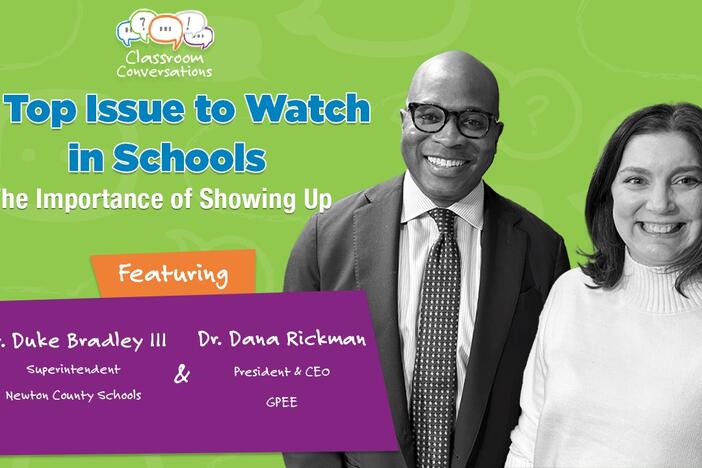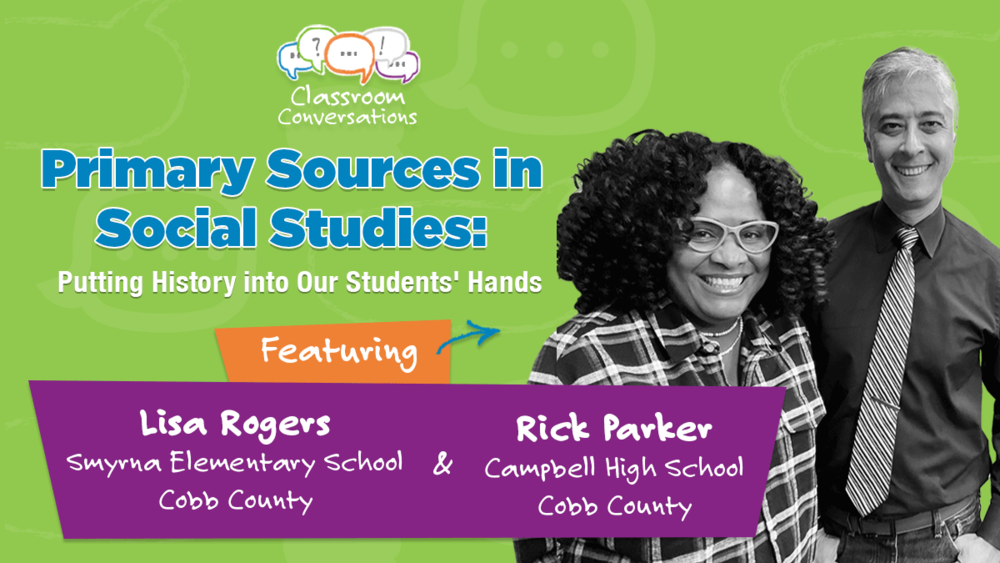
Section Branding
Header Content
Episode 305: Primary Sources In Social Studies: Putting History Into Our Students' Hands
Primary Content
Unlock the power of primary sources in your social studies classroom! In this episode, Lisa Rogers and Rick Parker of Cobb County Schools give teaching tips to improve student curiosity and comprehension.

Unlock the power of primary sources in your social studies classroom! In this episode, Lisa Rogers and Rick Parker of Cobb County Schools give teaching tips to improve student curiosity and comprehension.
TRANSCRIPT
Ashley Mengwasser: Good day to you. Welcome to Classroom Conversations, the platform for Georgia's teachers, a place for you to share and learn. This podcast series, now in its third season, yay, is presented by the Georgia Department of Education in partnership with Georgia Public Broadcasting. I'm Ashley Mengwasser, your host, and I'm chumming with some prominent classroom figures to discuss Georgia historical figures and utilizing primary sources and inquiry-based learning. Who is credited with the expression, "Don't make me repeat myself"? Moms, maybe, yeah. But history. Today and every day should be about celebrating a clean slate, history in the making. But certain people are always bringing up the past. History teachers make a living of it. But that's a good thing. Our first guest, Lisa Rogers, has been described as a social studies rockstar. Lisa is a gifted teacher at Smyrna Elementary School in Cobb County. And joining her, Rick Parker. Rick is a longtime middle school teacher now in his first year teaching at Campbell High School in Cobb County. Lisa and Rick teach for the same school system, a parking lot apart. Welcome to the podcast, Lisa and Rick.
Lisa Rogers: Thank you. So happy to be here.
Rick Parker: Glad to be here.
Ashley Mengwasser: How are you two today?
Lisa Rogers: Wonderful.
Rick Parker: Doing great.
Lisa Rogers: I'm so excited.
Ashley Mengwasser: Did you commute together is the next question.
Rick Parker: No, we didn't.
Lisa Rogers: We did not.
Ashley Mengwasser: You did not.
Lisa Rogers: But we were catching up outside. We had not seen each other in a long time, but we've known each other over 14 years.
Rick Parker: Yes.
Ashley Mengwasser: That's amazing. Such history.
Lisa Rogers: Such history.
Rick Parker: That's right.
Ashley Mengwasser: In this duo. Well, let's first delve into your own individual histories. Can you please tell me how you found your way into teaching history? You first, Lisa.
Lisa Rogers: Well, I started out elementary level of course, and history's always been a passion for me. I've always had that brain that was just inquiry-based, asking questions, seeking answers, and just so happened that I presented at one of Cobb County's professional learning events that they had and Joanne Wood, at the time, who is now working in the state level, well, she's retired, saw me and she thought, "Oh, my gosh. You would be great presenting some of this information to other teachers out there. Share some of your knowledge." And that's when it just happened. It just took off. This was over 20 years ago.
Ashley Mengwasser: Wow. So you said this to me when we first talked. "History is my jam." You meant that.
Lisa Rogers: It is. I love it.
Ashley Mengwasser: As it should be. As it should be, Lisa. Rick, did you plan on being a history teacher your whole life?
Rick Parker: Not at all.
Ashley Mengwasser: Really?
Rick Parker: Not at all. I was originally going to become an officer in the Air Force.
Ashley Mengwasser: Is that right?
Rick Parker: Yes. But I've always been a curious person and the more I realized it, that just pointed me towards teaching and got my degree and teaching history is what I've been doing since.
Ashley Mengwasser: Since that time.
Rick Parker: Yes.
Ashley Mengwasser: Now how do you each make history come alive in your classroom. Rick?
Rick Parker: Well, when I taught middle school, I would regularly wear costumes to class. And these are all costumes related, usually, to introduce a particular topic or to introduce a particular unit. I would dress up as Cecil Rhodes to introduce colonization in Africa. I had a civil defense worker outfit I wore to introduce the Cold War. And when we were learning about communism, I would dress up as Mao.
Ashley Mengwasser: Well, that drives the point home. What about in your elementary classroom?
Lisa Rogers: Well, for me, I use a lot of acting and improv.
Ashley Mengwasser: Yeah.
Lisa Rogers: And so, the way that I get students engaged is using a lot of acting. We'll pull up some plays, we'll actually play the part. I don't dress up, but the students are more than happy to dress up and become engaged. We also use a lot of music. So a lot of what they've learned, we turn into music that's current for today. So at any moment, you could hear a song blasting from my classroom because the students have changed the lyrics to fit whatever we're learning.
Ashley Mengwasser: And it is a relevant song that you've given historical-
Lisa Rogers: It's a relevant song. Yes.
Ashley Mengwasser: Look at that. That's very cool.
Lisa Rogers: Just a way to engage and keep them interested in the curriculum and the standards.
Ashley Mengwasser: Who is your favorite historical figure and your favorite Georgia historical figure?
Lisa Rogers: I had a hard time picking, and I ended up going with thinking about your question, I have to say Harriet Tubman and Sojourner Truth. I know, not necessarily Georgia, but I just feel like they are powerful women-
Ashley Mengwasser: Yes.
Lisa Rogers: ...who were not afraid of change. They were not afraid to take risks. They persevered against all odds and they just resonate with me. They weren't afraid. And we can't talk about Georgia and not mention MLK.
Ashley Mengwasser: Yes.
Lisa Rogers: Martin Luther King. Dr. Martin Luther King. Greatest civil rights activist of all time along with you have John Lewis.
Rick Parker: Absolutely.
Lisa Rogers: Yeah. We can't not talk about them. He's just pivotal to Georgia. And so we can't talk about these people and not mention that.
Ashley Mengwasser: Dr. King.
Lisa Rogers: Dr. King. History is about not being afraid. It's about taking risk and making that noise and calling attention to the issues and the problems that are happening of that time.
Ashley Mengwasser: Yes. The noise that makes social change.
Lisa Rogers: Yes.
Ashley Mengwasser: How do you answer that question, Rick? Your favorite historical figures-
Rick Parker: Well, my favorite all time historical figure would have to be Gandhi. And not for the reasons that other people appreciate Gandhi. He has his work on civil rights and all that. But, no, I love Gandhi because he was so good at trolling the British. A certain amount of being effective as a revolutionary, as essentially what Gandhi was, involves being able to manipulate the people who are oppressing you. And he did that marvelously.
Ashley Mengwasser: Interesting.
Rick Parker: Yeah. As for the state of Georgia, I spent a lot of time thinking about that and, really, I have to come down on the side of Jimmy Carter.
Ashley Mengwasser: Jimmy.
Rick Parker: Jimmy Carter. Even though he wasn't revered as one of our most effective presidents, his career before and after being president, just he's a role model of being a good human being that-
Ashley Mengwasser: He is.
Lisa Rogers: I have to agree.
Rick Parker: ...I think everyone should look up to Jimmy Carter.
Ashley Mengwasser: Jimmy. And he really represents the American dream in ways. To come from Georgia and peanut farms all the way to the White House. And that's something that we lionize about our society. And I think that that's a wonderful thing. I met Jimmy Carter on an airplane one time. Very pleasant man. We're all just sitting there and people started cheering and pulling out their phones. It's like, "Oh, it's a celebrity." And then here comes sweet Jimmy, just shaking hands. He had to shake everyone's hand, so I don't think we ever took off on that flight because he wanted to get to all of us. Such a gentleman. Is there a common misconception about history that you want to set straight right here and right now. Lisa?
Lisa Rogers: The common misconception, for me, I think that the misconception is that you typically only hear one side of the story, and it's one side of the story that they want people to hear. So, for me, this is where I tell my students, "This is where we have to do our research. This is where we have to do our vetting and digging deep to find the answers, but we want to look at the broad picture. We don't just want to look at one side." And I think that the misconception is it's always only told from one side. And if it is told from one side, do your work.
Ashley Mengwasser: Yes.
Lisa Rogers: Find out what that other side is.
Ashley Mengwasser: Right. It's not some singular voice handed down.
Lisa Rogers: Correct. Correct.
Ashley Mengwasser: Right.
Lisa Rogers: We're living in an age where we have technology. It's not like in my time where I pulled out the encyclopedia. I just dated myself. And we just have to look through the Encyclopedia Britannica. That's not a plug for them, but I'm just saying.
Ashley Mengwasser: Right.
Lisa Rogers: So, we can do the work.
Ashley Mengwasser: Yes.
Lisa Rogers: We can do the vetting. We can find the answers and not just hear one side.
Ashley Mengwasser: And get the full story.
Lisa Rogers: Full story.
Ashley Mengwasser: Full story. Rick, what's a common misconception about history?
Rick Parker: And by the way, I love Lisa's answer.
Ashley Mengwasser: Yes, me too.
Rick Parker: I'd say the idea that history is all about stuff that happened a long time ago and isn't relevant today. We're learning more and more that history absolutely affects where we are today. We can't really understand what's going on in the modern world without having the backstory. It's like trying to watch the last five minutes of a movie without watching the rest of a movie. So history is absolutely about what's happening today. History is not about a bunch of dead people. Okay.
Ashley Mengwasser: Exactly.
Rick Parker: I mean, Ruby Bridges is alive and on Instagram.
Lisa Rogers: Right.
Ashley Mengwasser: That's true. That's true. I will admit, as a student, I was always pretty reticent about history class, but the more mature I get, as I continue to age as gracefully as I can, I think about how often I revert to a former pattern to do the next thing. In a production, I'll always say to myself, "Well, what did we do the last time? What worked? What didn't work?" Aren't I going back to the history of that experience? So I think we all kind of have to see it a little differently with appreciation, and that really transforms the experience. Let's talk about primary sources. I know that that's really the thrust of our conversation today. Let's start simple. What is the significance of primary sources?
Rick Parker: Well, primary sources, and by the way, for those who don't know, primary sources are actual documents, actual artifacts, actual images from a particular time period or a particular historical event or historical person. And, to me, the most important thing about primary sources is students have to learn how to interpret them. They're not being given to them with an explanation of what it is. They have the source and they have to figure out, now with the guidance of their teachers, of course, how do I interpret the significance of this? How do I evaluate this? How do I extract meaning from this? And that is a very important skill in our society. That's a skill about how we deal with information. And obviously, I'm teaching high school now, but even with the young kids, we have to get them learning this because otherwise, how do they become good citizens in a democracy if they cannot process this information?
Ashley Mengwasser: Interpret.
Rick Parker: And there's a lot of skills involved. Now, my high schoolers, my 12th grade international baccalaureate students, there's a special process that they learn to handle primary sources. We call it OPCVL, by the way.
Ashley Mengwasser: Oh my.
Rick Parker: That's right. For each source that they look at, they are having to process and analyze the origin of that source, the purpose of that source, the content of that source, and then evaluate based on those things, what are the values of this source and what are the limitations of this source?
Ashley Mengwasser: Love that.
Rick Parker: And that's a set of skills that we can all use.
Ashley Mengwasser: OPCVL. You changed my life today, Rick.
Lisa Rogers: I really like that. OPCVL. I really like that because, even on the elementary level, I find that we're still doing the same things. Primary sources give my little learners a sense of history because, let's face it, they don't see much past their world.
Ashley Mengwasser: True.
Lisa Rogers: Past their soccer practice, their dance classes. And so I think that primary sources help them to form connections that are critical to learning. Students are able to make inferences, they're able to make generalizations, synthesize information, ask questions. And asking questions is the critical piece to learning. Children aren't going to learn if they're not going to ask questions. So stimulating that part of their brain where they're wanting to know more, that inquiry part, asking questions, it helps to synthesize all of the information. And by using primary sources, it helps to cover that information processing skills that we see from kindergarten through 12th grade across the board for the DOE standards. So it's very important that you tie in those primary sources to get those juices flowing so that students are able to ask questions and build that critical thinking.
Ashley Mengwasser: And that memory of the event-
Lisa Rogers: Correct.
Ashley Mengwasser: ...sticks with them. Right?
Lisa Rogers: Yeah.
Ashley Mengwasser: What are a few primary sources you like to engage with your students?
Lisa Rogers: I will say picture books. I'm going to say that it's not necessarily a primary source, but in addition to using, for instance, I wrote a lesson, the Green Book that talked about, if you're not familiar with the Green Book, it was a book that was created in 1936 that gave African American drivers safe places that they could stop in segregated places. So here is a list of hotels that you could stop at to get rest overnight. You won't have to worry about being African American because you'll be able to get a room.
Ashley Mengwasser: Right.
Lisa Rogers: That sort of thing. So I know for that lesson, I pulled up the actual Green Book on my board and students could not believe it, but in addition to using those primary sources, I do love picture books. Picture books for the younger students is a nice way to tie them in and get them engaged in the lesson. Most often teachers will use a picture book to get their hook, to hook their lesson. So I always try to encourage teachers, in addition to primary sources, utilize those picture books because that's just as important when your audience is younger.
Ashley Mengwasser: Right. You can see that instruction really click in with a kid once they see the image. Right.
Lisa Rogers: You can. Yeah.
Ashley Mengwasser: It's kind of like that aha moment happens in their eyes. What primary sources are you using, Rick?
Rick Parker: Well, obviously, we use a lot of primary source documents and images, but my favorites are when we can actually put an artifact in a kid's hand.
Ashley Mengwasser: Oh.
Rick Parker: When I do an introduction to the Cold War, for example, before we talk about anything about the actual topic, I'll split the kids up into groups and hand out some artifacts. I'll give one group a civil defense worker helmet, a Geiger counter to another group, a piece of the Berlin Wall to another group, perhaps a diagram from a government document of the nuclear triad. And by them having... And I'll prompt them, "Well, try to figure out what you have and come up with some questions about this." And by having them manipulate these with partners, they come up with a lot of really good questions and they have some time to take a look at this source that they have, this artifact, they come up with a bunch of questions about that. And then we then discuss, have them share out, almost like show and tell, but share out what they have with the rest of the class. And, more importantly, share out the questions that they've come up with so that we can put together a little bit of a story of what it is that they're looking at.
Ashley Mengwasser: That sounds really fun. And that may be your answer to the next question, Rick. What is one of your best lessons using primary sources? Is that your favorite?
Rick Parker: That would be my favorite lesson right there.
Ashley Mengwasser: That's your favorite lesson. What's yours, Lisa?
Lisa Rogers: Mine was the Green Book.
Ashley Mengwasser: The Green Book?
Lisa Rogers: I pull that up and I put that Green Book on the board. And it's so interesting because a lot of the times, when I'm delivering my information to students, I don't tell them all the time what it is they're learning. So here I am putting this Green Book, I use the primary sources of the Green Books. There are multiple ones of them. And I just tell the students, "Wow, look at this book. What do you notice here?" I use a lot of see, think, and wonder, especially with the younger students, because that's a way to just get them engaged and get them excited about what they're going to learn. So I put the book on the board and I'm like, "What do you see here?" And they're like, "Oh, I see it looks like a phone book." We talked about phone books because this generation knows nothing of a phone book.
Ashley Mengwasser: Doesn't know the phone book.
Lisa Rogers: Just so you know, I have a whole case of antique things in my classroom, and I take those things out in the beginning of the year, depending on the grade level I have, and I'll say, "I want you to go around with your clipboard and your paper and tell me what these objects are." Potato masher was a back massager. It's things like that. No clue. No clue.
Ashley Mengwasser: I should probably use mine that way because I don't think I've been using my potato masher much-
Lisa Rogers: I was like, "Well, it would be a good back scratcher."
Ashley Mengwasser: That's great.
Lisa Rogers: But just to get them... With the Green Book, I put that up there and then we just have conversation.
Ashley Mengwasser: How important are field trips to your teaching, Rick?
Rick Parker: Well, field trips are a great. My subject area is mainly world studies things, but field trips are a great way of really providing extensions for them and mainly for inspiring and visualizing the history. That's what field trips really do for us. Content-wise, not as much, but just the inspiration.
Lisa Rogers: I agree. And also field trips allow us to experience, especially virtual.
Ashley Mengwasser: Yes.
Lisa Rogers: You experience it without leaving the comfort of your classroom.
Ashley Mengwasser: Yes.
Lisa Rogers: It's cheaper-
Ashley Mengwasser: Yeah, I want to talk about that.
Lisa Rogers: ...especially if you're in a Title I school. The cost is cheaper.
Ashley Mengwasser: Why don't we look now specifically at the benefits of virtual field trips? How are they helpful to you guys?
Lisa Rogers: Right. So, for me, virtual field trips allow the students to enjoy the benefits of things that are out there for them to see without leaving the comfort of their classroom. Another option that teachers have as well is when you focus on Martin Luther King, there's the MLK Center, and it's actually virtual. You're able to go on site and look at the house that he grew up in, tour through his church. Now I wouldn't say it's quite virtual, but you have the picture there and then there's an explanation of what these resources or places are. And like I said, if you are a Title I school, it's inexpensive. And we can take time. We can take time and explore. We can take time and have those conversations about the primary sources that we're looking at. So it's so important and it also helps to tie in and wrap that standard in a box and make that pretty. It completes the package.
Ashley Mengwasser: Yeah, Rick?
Rick Parker: Yeah, and I agree with the time part here. When an in-person field trip involves all day and transportation and we're wrangling people in and out of a fast food place for lunch and all of this for what ends up usually being about a two-hour span of time where they're actually learning something, with virtual field trips, it is so much more convenient. So convenient because you can do everything you want in that field trip in one class period, very often, and sometimes depending on how you've structured it, you can dip in and out of multiple virtual field trips as part of the same lesson.
Ashley Mengwasser: That's incredible.
Rick Parker: And this way, it's much easier to tie it into your content standards because you can tailor them much more specifically, and also because you are not committed to what time we have to get on this bus to leave here. We can pivot if we need to. If a teachable moment comes up in class, we can pivot. We can spend extra time on this one part of this virtual field trip, on this one thing. And the focus is that much better for the students as well.
Ashley Mengwasser: It's much richer learning. And with the pandemic, I know that probably put things on hold for a while. Where are physical field trips in your district right now?
Lisa Rogers: We're back in the swing of things.
Rick Parker: Yeah, we're pretty much back to normal on the physical field trips, but.
Lisa Rogers: Yeah, we are.
Rick Parker: But one of the cool things about the pandemic is because of the pandemic, a lot of sites created virtual options. So a lot of new virtual opportunities came up because of the pandemic.
Ashley Mengwasser: And how do teachers go about setting up a virtual field trip?
Lisa Rogers: For me, as a teacher, first of all, I would vet that website to see what it is I'm looking for in terms of the standards because knowing your standards, of course, is important. You want to begin with that end in mind. What is it that you want students to walk away knowing? What do you want the focus of learning to be? When I look at virtual field trips, I always look for images, animations, simulations, audio, and video, the full experience of a field trip. So we look for those things and it caters to all of the senses and it's a nice way to engage the students.
Rick Parker: And to add to that, there's a lot of... The term virtual field trip is a very broad term, and there are a lot of offerings that are offered as a virtual field trip that might just be a fancy website. Some of them are maybe a fancy website. The more sophisticated ones might be a ride along on video as somebody else tours that particular location. But a lot of places do offer fully interactive-
Ashley Mengwasser: Produced virtual field trips.
Rick Parker: ...produced virtual trips where the student gets to choose where they go. The student is navigating their way through, with or without VR goggles, by the way.
Ashley Mengwasser: That's really cool.
Rick Parker: With or without VR goggles. And related to that, I would also mention that my first step would be to involve my school's media specialists. The media specialists know a lot about virtual field trips. Absolutely, go to the folks who know the technology. And, like Lisa, definitely preview-
Ashley Mengwasser: Vet them first.
Rick Parker: ...the site. Vet it.
Ashley Mengwasser: Sure.
Rick Parker: But also preview the field trip using the technology that the students will be using.
Ashley Mengwasser: Good point. Yes.
Rick Parker: So, using the same devices that the students will be using and the same user accounts that the students will be using. In some places, the teacher's user account may have more access than a student's user account and that might make a difference on-
Ashley Mengwasser: In their experience.
Rick Parker: ...yes.
Ashley Mengwasser: Absolutely. Well, where do you go? Where are these platforms? And tell me some of the places you've been virtually.
Rick Parker: Okay. Well, I have to plug this one. A couple years ago, my eighth graders had GPB'S Mobile VR Lab come out for a civil rights history lesson, and that was a fantastic lesson. And this is a lab with the full virtual reality goggles. I believe it's a Oculus system there.
Ashley Mengwasser: Oculus. Yeah.
Rick Parker: And it was really cool. It was really cool. It was just so neat as the teacher just to watch my students with these VR glasses going around, looking and panning and tilting their heads. By the way, if you're using VR, it's helpful if the kids are in swivel chairs, just so you know that. But that one was fantastic. And, by the way, and a nice thing to look out for on these is an option for some students who don't have VR goggles on, if somebody isn't able to do it with the goggles for whatever reason, if they can do it on just our regular screen, that works well. And this one, GPB Lab, was fantastic for that. I also love the Google Expeditions. Now they've changed a little bit on that. I don't know if you're able to make new ones now. I think they call it the Google Arts and Culture app, but they have a fantastic thing where, essentially, it's using the Google Street view technology, but with a much fancier, fancier views. My seventh graders, we got to do a VR tour of the Forbidden City at Tiananmen Square in China. Especially, by the way, if you're doing geography or science, a lot of these, you can get out into nature with some of these, like we got to see a national park in Kenya this way. So just some fantastic.
Ashley Mengwasser: Google, GPB's resources. What do you use, Lisa?
Lisa Rogers: And also, DOE has some excellent resources, too. Don't forget that website as well. But I know that throughout the years, and I kind of remember a few of the places we visited virtually. For instance, the George Washington Carver Museum, that covers your first grade standards. So for teachers that are teaching first grade listening to this, you've got the George Washington Carver Museum. You get a chance to tour the Jessup wagon and kind of go through some of his learning labs. The Jimmy Carter Museum, second grade standard. The Booth Museum, third grade standard, focuses on American Indians. The History Center, fourth grade standard. The Holocaust Museum at Kennesaw State, fifth grade standard. So all of these places offer... There's a plethora of information that's out there. And it's not that, as teachers, we don't want to utilize these things. We forget.
Ashley Mengwasser: You just needed this reminder from Lisa and Rick-
Lisa Rogers: You need this reminder. That's right.
Ashley Mengwasser: And thank you for that.
Lisa Rogers: You're welcome.
Ashley Mengwasser: And let's conclude, please, with some of your favorite techniques or teaching tips for your history classrooms. What would you like to offer teachers today?
Lisa Rogers: Often, and I'm just on a serious note here, I've presented nationally and one thing that I often hear from teachers is they are afraid to cover the material. They are afraid to read the picture books that go... Like, for instance, The Green Book or The Youngest Marcher. I'm just thinking of some picture books in my head that go with situations that have occurred throughout history. And I always tell teachers, "Why are you afraid? When you start putting your information and your personal beliefs in the books, that's when it becomes a problem. Read the material that the author wrote. There should be no fear, if you are reading what's in front of you. When you start adding your opinion and what you think, that's when it becomes a problem. So be mindful of that, and don't be afraid. These kids are looking up to you. You can cover this material. Just read what's there. Don't add your personal insight into it."
Ashley Mengwasser: Yeah, that's really-
Lisa Rogers: Just stick to the facts.
Ashley Mengwasser: Yeah.
Lisa Rogers: There's nothing that can be said.
Ashley Mengwasser: Stick to the facts.
Lisa Rogers: Yep.
Ashley Mengwasser: I like that, Lisa. What do you have, Rick?
Rick Parker: I'd say encouraging students to ask the questions. Ask the questions. Too often teaching can be a situation where students want to just sit back and be just consumers. Teach them to ask the questions and encourage them to ask the questions. And you'll be surprised at the answers that they come up with if you let them ask the questions.
Ashley Mengwasser: Another thing you mentioned earlier that I thought was very interesting for history classroom was just the pairing up part of it.
Rick Parker: Oh, absolutely. Absolutely. Whenever you can, and we sometimes call that collaborative learning and things like that, but we don't have to do anything fancy with it. Whenever you have a chance to have students pair off in order to compare, compare their impressions of something, compare their questions. When students are working together in pairs, they're more likely to ask questions of each other and less likely... When it's a whole class discussion, a lot of students will just shut down and-
Ashley Mengwasser: Right. Bow out.
Rick Parker: ...but when they're working with partners, number one, they're more comfortable asking a partner a question, but they're also more comfortable sharing stuff with each other. And that can build. That can build. "Isn't this interesting here?" And, "Oh, yeah, I thought that." And that can really build, and that's one of things that can make education exciting.
Ashley Mengwasser: Pair to compare.
Lisa Rogers: I like that.
Ashley Mengwasser: There you go.
Lisa Rogers: That's a t-shirt.
Ashley Mengwasser: Run off with that, guys.
Lisa Rogers: Pair to compare.
Ashley Mengwasser: Thank you so much for being here today, Rick and Lisa.
Lisa Rogers: It was wonderful.
Rick Parker: It was a great time.
Ashley Mengwasser: You guys are fascinating Georgia teacher historical figures. That's what I'm going to call you.
Lisa Rogers: I love that.
Ashley Mengwasser: I hope that's okay.
Lisa Rogers: I've arrived.
Ashley Mengwasser: You have. I leave you with this for our listeners. Let one historical fact echo in the halls of history year after year. And that's that you're a great teacher. We're back next week with more Classroom Conversations and we like when that fact repeats itself. Talk to you soon. Bye bye. Funding for Classroom Conversations is made possible through the School Climate Transformation Grant.
Unlock the power of primary sources in your social studies classroom! In this episode, Lisa Rogers and Rick Parker of Cobb County Schools give teaching tips to improve student curiosity and comprehension.

